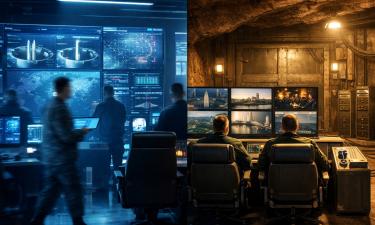Two NASA Shuttle facilities suffer damage
NASA facilities in hard-hit Louisiana and Mississippi were spared the brunt of Hurricane Katrina's wrath, but officials hinted that storm-related expenses may yet reach $1.1 billion and conceded that the disarray adds more uncertainty to the next shuttle launch.
At the Michoud facility in New Orleans East, where the space shuttle's external fuel tanks are made, contractor Lockheed Martin had accounted for three-fourths of its 2,000 employees by late yesterday, said spokesman Tom Greer. About 70 percent of its 250 workers at the Stennis Space Center near Bay St. Louis, Miss., where shuttle engines are tested, had been reached. NASA has contacted all of its own employees at both sites.
Bill Parsons, the space agency's senior official in charge of the hurricane relief effort, said aerial surveys suggested damage to both facilities was confined mainly to roofs of some buildings, though a chunk of concrete hit one of the 30-story fuel tanks stored at the Michoud site and a tornado appeared to have struck a building at the Stennis site. Almost 20 percent of employees in Mississippi may be homeless, he estimated. A similar forecast is not yet available for Michoud employees, he said, though the number of displaced employees will likely be "huge."
"You just can't watch it on TV and get a feel for the devastation that I've seen down here on the Gulf Coast. It's just unbelievable," Parsons said, reports Newsday.
According to the New York Times, preliminary analysis based on photographs estimated more than $1 billion of damage to the Lockheed-Martin's Michoud Assembly Facility in New Orleans, which builds the shuttle's external fuel tanks, and the Stennis Space Center near Bay St. Louis, Miss., which tests the main shuttle engines.
William H. Gerstenmaier, head of NASA's space operations, described the estimate as a "rough order-of-magnitude guess" that would be refined as inspectors got close-up looks at the buildings.
Until Wednesday, Michoud had been cut off by the floodwaters, without electricity or running water, and reachable only by helicopter, said William W. Parsons, a shuttle official who is heading NASA's recovery effort. Michoud will probably not be reconnected to the electrical grid for some time. "It's hard to tell," Mr. Parsons said. "It may be as long as three weeks. It could be longer than that."
What is less certain is how the Michoud workers fared. Lockheed-Martin has been able to contact only about half of its 2,000 employees at Michoud, Mr. Parsons said. Some of the work on the external tanks will be transferred to the Kennedy Space Center in Florida.
Subscribe to Pravda.Ru Telegram channel, Facebook, RSS!




